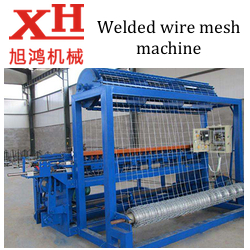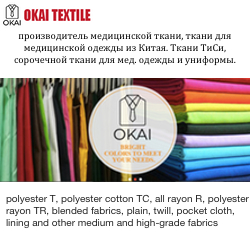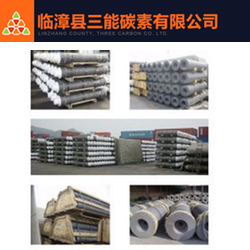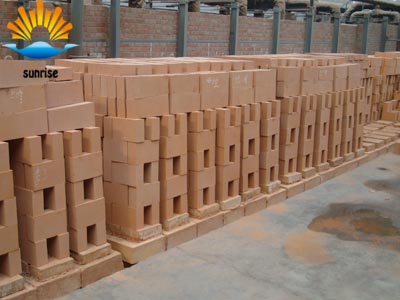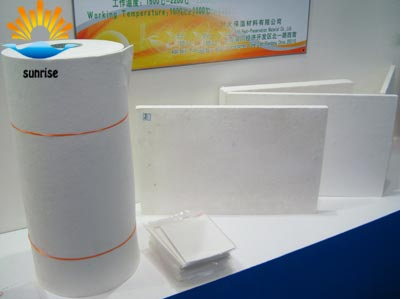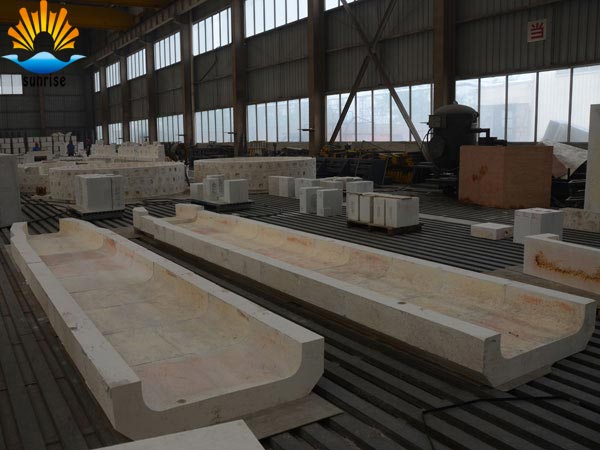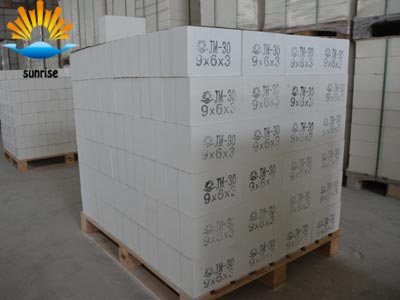Application of Lightweight Clay Brick in Industrial Furnace


Lightweight clay bricks are light refractory products containing 30% to 46% aluminum. They are mainly made of clay clinker or light clinker. They are usually produced by flammable processes. They can also be chemically formed or foamed to form a porous structure. . The ingredients are mixed with water to make a crushed clay or slurry, extruded or cast, dried, and fired in an oxidizing atmosphere at 1250-1350°C. The commonly used lightweight clays have a bulk density of 0.75-1.2 g/cm 3 . In fact, the proportion of 1.0 is more.
Lightweight clay bricks are favored by most industrial furnace manufacturers because of their good performance and low price. As long as they are not in direct contact with the fire, the insulation material is basically replaced by lightweight clay bricks. What are the advantages and disadvantages of lightweight clay bricks? Industrial furnace bricks on the surface of the furnace typically have heat loss and heat loss of about 24% to 45% of fuel consumption. The use of lightweight bricks with low thermal conductivity and low heat capacity as furnace structural materials can save fuel consumption. At the same time, because the furnace can be quickly heated and cooled, the production efficiency of the equipment can be improved; it can also reduce the weight of the furnace and simplify the furnace. However, the structure improves product quality, lowers ambient temperature, and improves working conditions. Lightweight firebricks have large porosity and loose structure and cannot directly contact slag and liquid metal parts. They have low mechanical strength and cannot be used in load-bearing structures. They are poor in wear resistance and should not be used in contact with charging materials. Worn parts.
Lightweight clay bricks, also known as lightweight clay insulation bricks, have strong performance. However, if the application is unreasonable, high-quality products will not be available. So, how can we make the lightweight clay bricks play the strongest insulation effect in the kiln work?
Lightweight clay bricks can only exert the strongest insulation effect within the maximum allowable temperature range. In the kiln, common lining components are often exposed to direct contact with flames and slag, and are only suitable for heavy bricks. Lightweight clay bricks are mainly used for thermal insulation of thermal equipment and industrial furnaces. They can be used where there is no strong high temperature molten material to attack and wash away. Some surfaces that are in direct contact with the flame are coated with a refractory coating to reduce slag erosion and furnace gas dusting to reduce damage. Of course, it is not in contact with the flame in non-smelting furnaces. In the kiln where the upper temperature limit is lower than that of light clay bricks, lightweight clay bricks can be used.
Other supplier products
|
|
Zircon Mullite Brick |
DescriptionZircon mullite brick selected high quality mullite sand and zircon powder as its main raw material. Molded by high pressure and sintered... |
|
|
Ceramic Fiber Blanket |
DescriptionKnown as aluminum silicate fiber blanket, ceramic fiber blanket mainly consists of selected high quality spun ceramic fiber, double side... |
|
|
How to choose refractories for furnace |
The main performance of the kiln is mainly determined by the technical and economical performance of the refractories, which directly affects the i... |
|
|
The characteristics of mullite insulation bricks |
1. Foaming Foams for Lightweight Heat Preserved Bricks Bubbles with uniform bubble diameters can be obtained. 2. The foam is independent, and it is... |
|
|
Hard Magnesium Silicate Insulation Board Used for Electrolyt |
HardMagnesium Silicate Insulation Board isproducedby mixinga blend ofultra-low conductivity raw materials withaninorganic polymerbinder.As a finish... |
All supplier products
Same products



